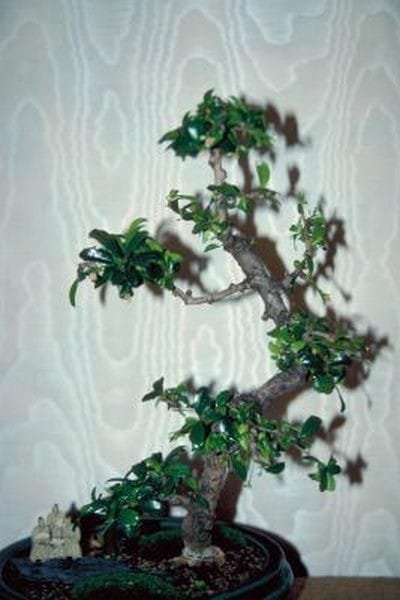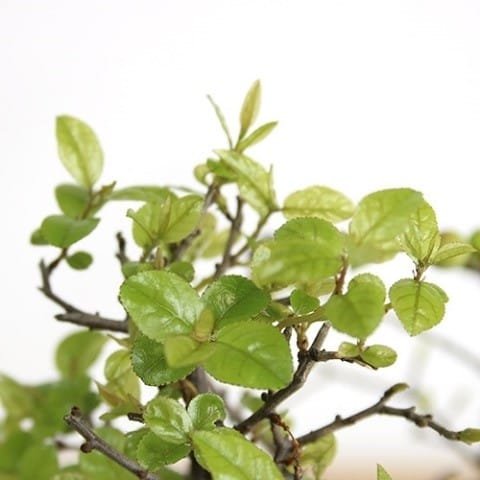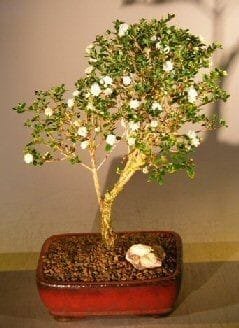Whether your bonsai tree will be able to turn into a masterpiece highly depends on an array of factors. It all starts with choosing the most suitable location that can allow the right access to light for each plant to thrive.
Growing bonsai trees indoors can be especially challenging when it comes to supplying enough light.
Fortunately, there are different bonsai trees that can grow with indoor light and perform excellently in terms of healthy development, as well as achieving the much-desired shape and appearance.
Picking the right plants based on your indoor grow space specifics is a fun and rewarding experience, as long as you skip the rush.
Growing Bonsai Trees with Indoor Light: Things to Keep in Mind

Indoor light is a broad term that can refer to artificial lighting setups, as well as the natural access of sunlight in an enclosed living space.
As a rule of thumb, better light gives better results for indoor bonsai growers.
If you don’t happen to live in a location where the summer season is all year round, then considering an additional source of indoor light such as fluorescent lights, HID lights or LED lights is your wisest move.
When picking the most suitable bonsai trees to grow with indoor light, don’t forget to take into account the plants’ humidity requirements.
Tropical bonsai plants generally require high levels of humidity accompanied by a lot of heat, apart from consistent and sufficient access to light.
In the list of indoor light-friendly bonsai trees below, we will get you acquainted with several different plant species that have different light/humidity/temperature requirements so that you can select the ones that make the best match for you.
Ficus Bonsai

Image Source: Pinterest
Belonging to the family of Moraceae, there are over 850 ficus species consisting of shrubs, trees, vines, hemiepiphytes, and epiphytes.
It is no wonder why ficus plants have become one of the most popular choices among indoor bonsai enthusiasts – these plants are not the most pretentious out there.
Your ficus bonsai can thrive indoors as long as you keep it away from shady spots. Do keep in mind that direct sunlight exposure is not recommended either.
Ficus bonsai trees are very tolerant of low humidity levels. They don’t require a lot of heat to flourish either.
Fukien Tea Bonsai

Originating from southern China, Fukien tea is an evergreen shrub that belongs to the family of tropical plant varieties.
If you share a passion for the mini bonsai style, then Fukien tea can be a wonderful choice.
Your Fukien tea bonsai tree can flourish when placed right on a bright window. But mind that it does not enjoy direct sunlight in the peak hours around midday.
Temperatures should be best kept at about 50 and up to 75 degrees Fahrenheit. Expect to see delicate white blossoms.
Video by KINO SHINOBI – Fukien Tea Bonsai. Trimming.
Source: youtube.com
Sweet Plum Bonsai

Snow Rose Bonsai

Image Source: Pinterest
Scientifically known as Sageretia theezans, a sweet plum tree is regarded as far less demanding than most types of fruit trees. Plum trees belong to the genus Prunus. Sweet plum is commonly referred to as Chinese Sweet Plum or Chinese Bird Plum.
Sweet plums give birth to delicate, sweet-scented white flowers in the summer season. Therefore, reliable, strong indoor light is a must. Simply exposing a Sweet plum bonsai tree on a window sill will not work well. Artificial lighting is required for best results.
Temperatures should not fall below 55 degrees Fahrenheit, and that’s one of the main reasons indoor bonsai enthusiasts can take advantage of this plant’s natural sensitivity towards well-balanced temperature rates. After all, sustaining the right temperature indoors is easier than sustaining it outdoors where the climate can often bring unexpected surprises.
Hawaiian Umbrella Bonsai

Image Source: Pinterest
A tropical tree native to Australia, the Hawaiian Umbrella tree (scientifically referred to as Schefflera arboricola) is also known as Dwarf Umbrella.
This evergreen plant doesn’t have high demands to thrive. You can enjoy your Hawaiian Umbrella bonsai tree without having to invest in an artificial lighting system since it can flourish in dim light.
The Hawaiian Umbrella tree does not require high levels of humidity to flourish, despite belonging to the family of tropical trees. But do make sure to keep temperatures above 50 degrees Fahrenheit (10 degrees Celsius).
Jade Bonsai

Image Source: Pinterest
Jade trees (Crassula ovata) originate from Africa. They are native to Mozambique and South Africa.
Jade trees share great similarities with Dwarf Jade trees (Portucalaria afra) but it is Dwarf Jade trees that are widely preferred among bonsai enthusiasts. Their fleshy, tiny, succulent leaves are glossy and attractive, making this type of tree wonderful for introducing to the art of bonsai.
Nonetheless, the bark of Jade trees gradually turns from soft green to alluring hues of brown and red with age.
Keeping in mind the origin of Jade trees, they adore plenty of sunlight, and direct sunlight is more than welcome. They can thrive indoors but not without a reliable source of light available.
Temperatures must be kept above 41 degrees Fahrenheit (5 degrees Celsius) or else, your Jade bonsai tree can die off.
The Wrap-Up

Image Source: Pinterest
Just some mere years ago, bonsai enthusiasts were much more restricted as far as picking bonsai trees that can grow with indoor light is concerned.
But nowadays, with the introduction of modern technologies and the advances of the science behind plants’ health and cultivation, accompanied by the rapid boom of accessible tutorials available across the web, you can become a better bonsai gardener than ever.
The learning process behind the art of bonsai is one of the sweetest rewards of being a bonsai tree gardener. With this in mind, newbie bonsai enthusiasts should not feel restricted in the bonsai masterpieces they can achieve and enjoy with a healthy dose of patience and some proper planning. Fortunately, bonsai trees that grow with indoor light are not a rare occurrence anymore but gradually turning into a beautiful trend instead.


